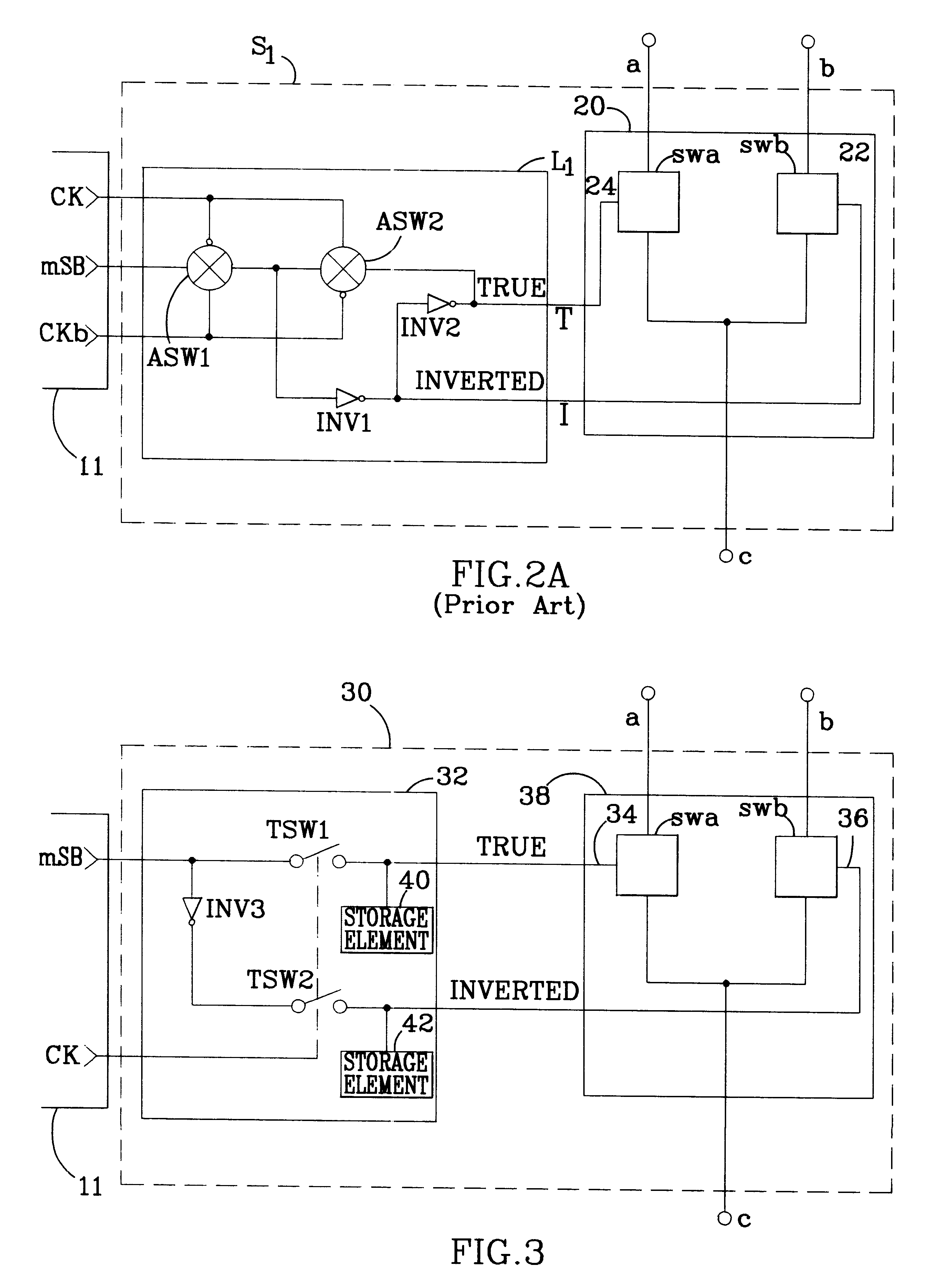Skewless differential switch and DAC employing the same
a differential switch and skewless technology, applied in the field of differential switches, can solve the problems of nyquist bandwidth, nyquist signal, nyquist signal, noise, etc., and achieve the effects of reducing the complexity of the clock generation circuitry of the switch controller, reducing the occurrence and duration of undesirable switch outputs, and reducing spurious switching
- Summary
- Abstract
- Description
- Claims
- Application Information
AI Technical Summary
Benefits of technology
Problems solved by technology
Method used
Image
Examples
Embodiment Construction
The new switch 30 of FIG. 3 may be employed within a DAC, for example, as one of the differential switches S1-Sn illustrated in FIG. 1. The new switch 30 comprises a latch 32 with a binary input MSB and enable input ck. The latch 32 accepts a single binary signal at an MSB input, and produces de-skewed TRUE and INVERTED control signals at like-named outputs. These outputs are connected to the control terminals 34 and 36 of a conventional differential switch pair 38 which may be compose, for example, as described in the background section, of NPN or PNP bipolar transistors, N-channel of P-channel MOSFETs or CMOS analog switches.
The latch 32 accepts a binary signal at the input MSB, inverts the signal with an inverter INV3 and, under control of transfer switches TSW1 and TSW2, transfers the TRUE and INVERTED signals thus produced into storage elements 40 and 42. Outputs from the storage elements 40 and 42 are connected to the control inputs 34 and 36 of a differential switch pair comp...
PUM
 Login to View More
Login to View More Abstract
Description
Claims
Application Information
 Login to View More
Login to View More - R&D
- Intellectual Property
- Life Sciences
- Materials
- Tech Scout
- Unparalleled Data Quality
- Higher Quality Content
- 60% Fewer Hallucinations
Browse by: Latest US Patents, China's latest patents, Technical Efficacy Thesaurus, Application Domain, Technology Topic, Popular Technical Reports.
© 2025 PatSnap. All rights reserved.Legal|Privacy policy|Modern Slavery Act Transparency Statement|Sitemap|About US| Contact US: help@patsnap.com



